Our 11 Best Education Articles in January: COVID Learning Loss, Widening Achievement Gaps, More Educators Considering Year-Round School & More
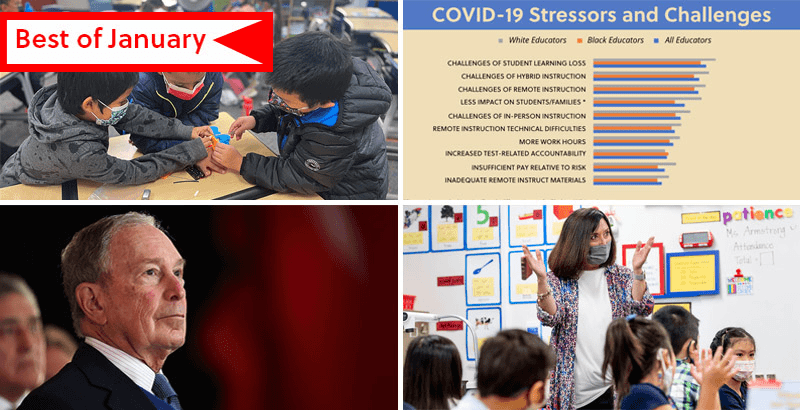
Get stories like this delivered straight to your inbox. Sign up for The 74 Newsletter
Some 23 months after America’s first classroom closed due to COVID, we began the new year grappling with fresh disruptions caused by yet another variant. Omicron has again led to quarantines, virtual instruction and mounting learning loss concerns, and several of our top articles this month focused on the uncertain road forward as educators continue the fight to keep students engaged and on track.
Here were our most widely shared articles to kick off 2022:
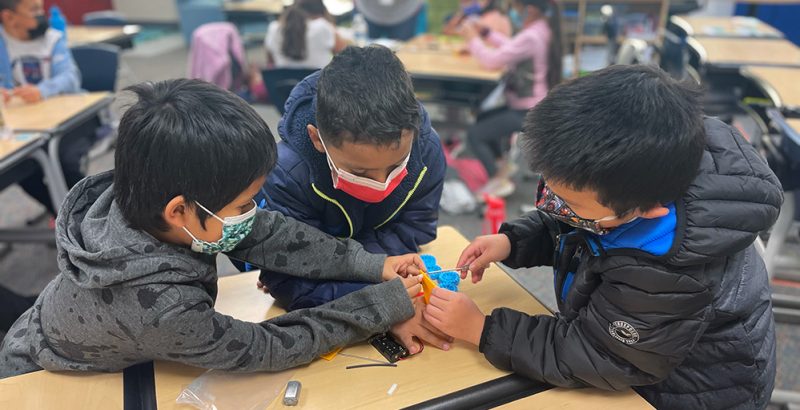
Why Learning Loss Is Prompting Educators to Rethink the Traditional School Calendar: Start Earlier, End Later, Extend Breaks for Remediation
Learning Recovery: Pandemic-related school closures, which caused alarming learning losses among the country’s most vulnerable students, have prompted some administrators to reconsider their academic calendars. Though the school year wouldn’t get any longer, an earlier start date, a later end date and numerous, elongated breaks could allow more timely remediation for children in need — and enrichment for those who are not. The suggestion comes as the fast-spreading Omicron variant is making it difficult for schools to remain open. But districts had already begun scaling back — moving to four days of instruction per week and adding days off to their calendars — in an effort to curb teacher burnout. Jo Napolitano takes the national pulse of year-round schooling, including in Washington state, where 22 districts are exploring ways to rearrange their 180-day calendars.
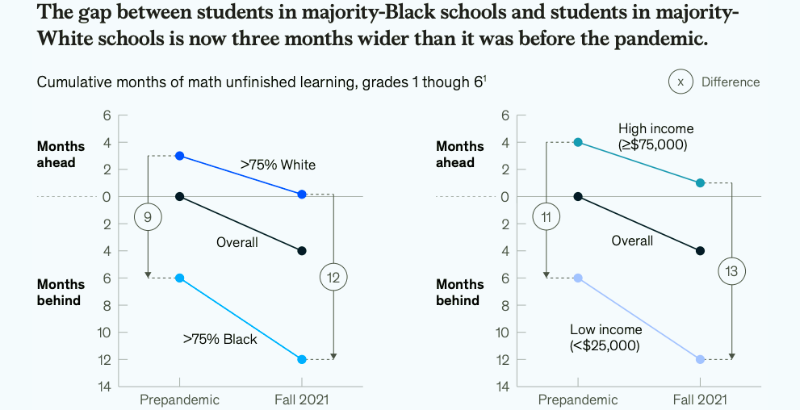
New Research: Students in Majority-Black Schools Had Been 9 Months Behind Their White Peers. Now, the Gap Is a Full 12 Months
Achievement Gaps: While students overall are starting to make up unfinished learning, what’s been described as the pandemic’s “K-shaped” recovery — and the resources directed to it — remain deeply inequitable, according to a new report by researchers at McKinsey & Co. Pre-pandemic, pupils in majority-Black schools were, on average, nine months behind children in white schools. Now, that gap has widened to 12 months. At the same time, the services and in-person instruction that could begin to bridge the gap are imperiled. Student absenteeism is up sharply from last year, and the number of children in individual classrooms who are several years behind is up 9 percent, creating daunting challenges for teachers in terms of tailoring instruction. Beth Hawkins has a quick rundown of the numbers.
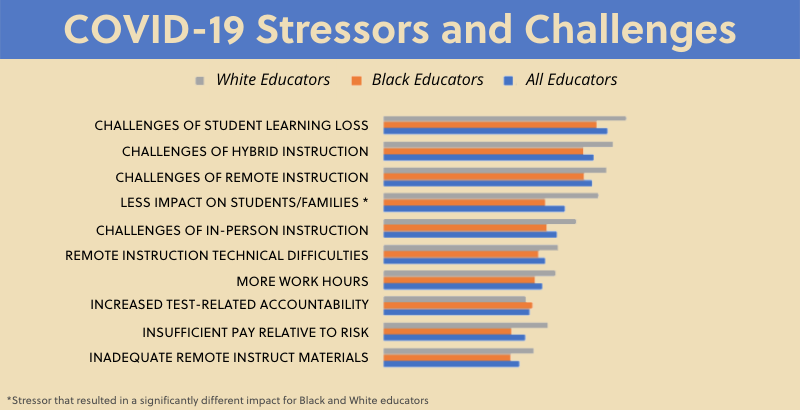
Teacher Trauma: New Orleans Researchers Find Educator Mental Health Closely Tied to Pandemic Classroom Effectiveness
Mental Health: A new report finds challenges associated with student learning loss top the list of pandemic-era stressors experienced by teachers in New Orleans, whose levels of depression, anxiety and PTSD rival or exceed those of health care workers. According to a survey administered by the Trauma-Informed Schools Learning Collaborative, a feeling of being ineffective with students — reported by white teachers more often than their Black colleagues — was the top stressor, followed closely by challenges related to hybrid and remote instruction. A joint endeavor of Tulane University, NOLA Public Schools, the New Orleans Health Department and a number of social service agencies, the coalition conducted the survey in June 2021, before first the Delta variant and now Omicron dashed hopes that schools might return to “normal” this year. Beth Hawkins has five top takeaways from the research.

Exclusive: Pittsburgh Schools Reported Zero Student Arrests While Court Records Show It’s a Discipline ‘Hot Spot’
School Discipline: Federal data show that no Pittsburgh students were arrested during the 2017-18 school year — certainly something worthy of celebration, if only it were true. Instead, a report released this month by the ACLU of Pennsylvania found that Allegheny County — and Pittsburgh in particular — is a student discipline “hot spot.” While the district said its underreporting was done in error, an analysis of county juvenile court data show that police carried out nearly 500 school-based arrests in Pittsburgh Public Schools that year. Those arrests disproportionately targeted Black students and children with disabilities, often for minor offenses. During the 2018-19 school year in Allegheny County, Black students were arrested nearly nine times more often than their white classmates, according to juvenile court records. That year, 1 in 51 Black boys and 1 in 69 Black girls were arrested at school, compared with 1 in 316 white boys and 1 in 894 white girls. Outside southwest Pennsylvania, federal education data suggest the issue of underreporting student arrests is also widespread. More than 60 percent of large school districts nationwide reported zero school-related arrests during the 2015-16 year, according to a 2020 report by researchers at the University of California, Los Angeles. “The harms of having police in schools are much more widespread than districts report,” the ACLU’s Harold Jordan said. Read more by The 74’s Mark Keierleber.
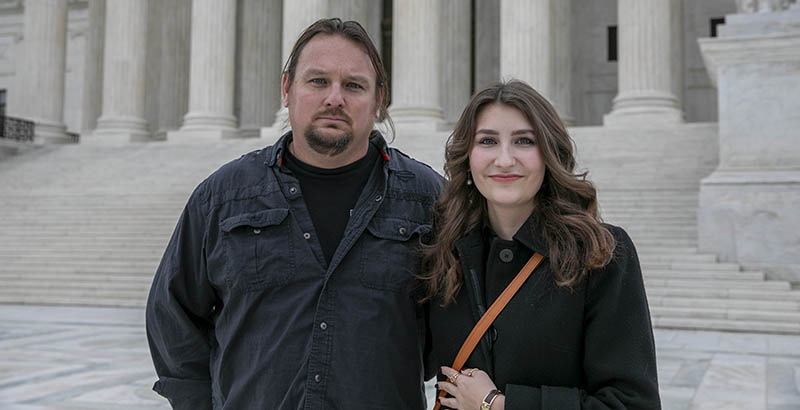
‘Equal Treatment, not Special Treatment’: Conservative Supreme Court Justices Appear Ready to Strike Down Religious Barriers to Public School Choice Funding
Supreme Court: Maine allows private religious schools to participate in its tuition benefit program for families that don’t have a public high school in their community — except for schools that seek to instill religious beliefs in their students. That caveat is at the heart of Carson v. Makin, a school choice case argued before the U.S. Supreme Court last month. Plaintiffs’ attorney Michael Bindas, with the libertarian Institute for Justice, argued that the state is discriminating against religion. He is representing two families that were told they could not receive a tuition benefit because they wanted their children to attend religious schools. Based on the justices’ questioning, experts said, states would likely no longer be able to defend such rules after the court rules next year. “Very few of the justices paid any attention to the longstanding principle at the heart of American constitutional tradition — that taxpayers should not be forced to fund religious education,” said Alex Luchenitser of Americans United for Separation of Church and State. Linda Jacobson reports.

Aldeman: There Is No ‘Big Quit’ in K-12 Education. But Schools Have Specific Labor Challenges That Need Targeted Solutions
School Staffing: The full numbers aren’t in yet, but 2021 will likely set a modern record for the number of Americans who quit their jobs. Economists have dubbed it the Great Resignation, as millions of employees search for higher pay and better working conditions. Is this Big Quit happening in education? Says contributor Chad Aldeman, the data suggest the answer is no. According to the Bureau of Labor Statistics, while turnover rates are setting new highs in the private sector, they look pretty normal in public education. That doesn’t mean there are no labor challenges in K-12. It’s just that those issues are smaller in magnitude than what the private sector faces, and they are much more about specific schools and particular roles within schools. Districts, Aldeman writes, should respond accordingly with solutions — including those involving targeted pay hikes — tailored to the actual challenges schools face. Read the full analysis.
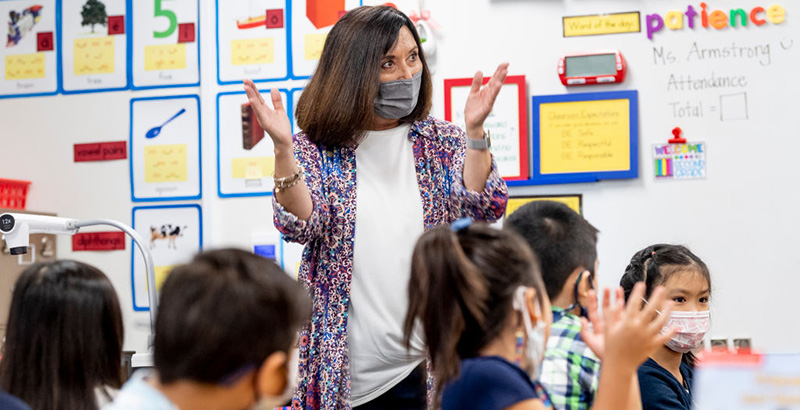
In Push to Renew School Accountability, Feds Urge States to Keep Eye on Pandemic’s Effects
Accountability: Following a two-year pause, states must resume pinpointing their lowest-performing schools and those with persistent achievement gaps, according to a recent draft of guidance from the U.S. Department of Education. But bowing to uncertainty sparked by the pandemic, officials will allow one-year changes to the criteria states use to identify those schools. That means report cards states use to communicate student performance to the public could look quite different. “This gives a clear signal to the field and to the states that we are restarting accountability,” said Jennifer Bell-Ellwanger, president and CEO of the Data Quality Campaign, one of the organizations that said more statewide data is necessary to fully understand the impact of the pandemic on students. The guidance also invites states to propose long-term changes that account for other areas of student success, such as college and career data. But others argue allowing states to make changes to how they rate schools could leave parents confused. Linda Jacobson reports.
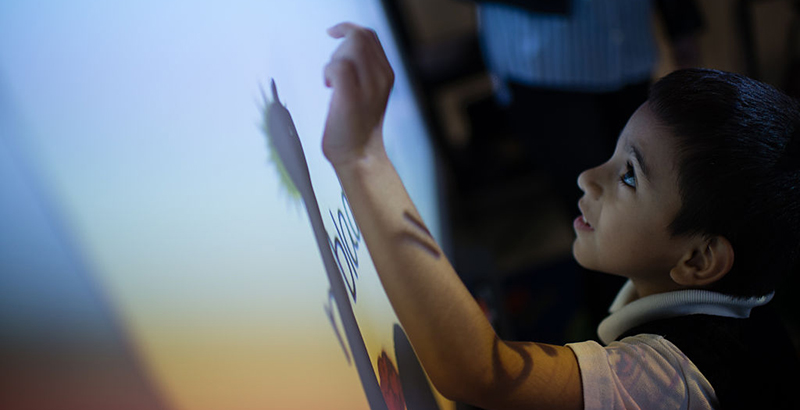
‘We Don’t Have Any Talented Students’: Confronting English Language Learners’ Drastic Under-Representation in Elementary Gifted & Talented
Equity: English learners are drastically underrepresented in elementary school gifted and talented programs, and the one tool advocates hoped would better identify them — non-verbal assessments — doesn’t work, critics say. In Florida’s Brevard County Public Schools, for example, only five of the 1,927 English learners in grades K-6 are among the 1,836 students enrolled in the district’s G&T program. Experts say teachers are not adequately trained to spot giftedness in these students and often falsely assume their language difficulties mean they are deficient or need remediation. Meanwhile, a national expert told The 74’s Jo Napolitano, many districts are abandoning costly non-verbal gifted assessments because they yield the same results as traditional verbal tests. A new exam that uses animation could help, and many G&T educators strive to identify giftedness in ways that transcend language. Still, it remains an enormous challenge. “We have all of this talent just sitting there,” said Jonathan Plucker, president of the National Association for Gifted Children. “And the child isn’t benefiting from their own skills. That is a massive societal failure. We simply have to do better.”

Rotherham: Bloomberg’s $750M Grant Is the Jolt the Charter Sector Needs — and a Litmus Test for White Democrats Who Claim to Back School Choice
Commentary: Bloomberg Philanthropies’s $750 million effort to create more high-quality charter school seats around the country is an exciting jolt to a sector that needs it, says contributor Andrew Rotherham. Which is why the lack of enthusiasm from the education reform and charter school world over the Bloomberg announcement was as noteworthy as the commitment itself. While charters are not a panacea or silver bullet, they get results. On average, urban charters outperform other public schools in their communities — often substantially. Support for charter schools is above 70 percent among Black Americans, who, along with Hispanic Americans, disproportionately support expanding school choice. You know who disproportionately doesn’t vigorously support more school choice? White Democrats. It’s noteworthy just how much opposition to greater educational choice comes from white progressives who are, on average, to the left politically of Black and Hispanic Americans on pretty much every issue except educational empowerment. Charters are an equity solution in public education because they give low-income parents power and choice and help create good schools in communities too often denied them. The next time someone tells you with great solemnity about how they “center” parents and just humbly follow the evidence on school choice, ask how excited they must be about a $750 million commitment to try to do that. Read the full essay.
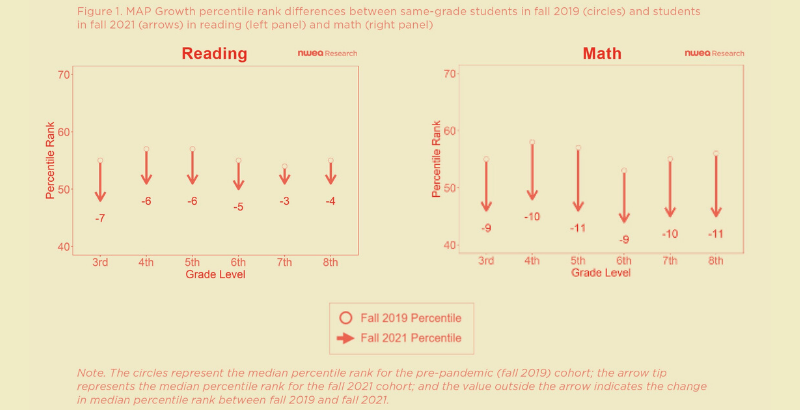
Analysis: Pandemic Learning Loss Could Cost U.S. Students $2 Trillion in Lifetime Earnings. What States & Schools Can Do to Avert This Crisis
College & Career: In newly released data, the nonprofit testing company NWEA reports that the median student in grades 3 to 8 returned to school this fall 9 to 11 percentile points behind in math and 3 to 7 percentile points behind in reading. But it’s difficult to convey the magnitude of that learning loss. To make it more tangible, contributors Dan Goldhaber, Thomas J. Kane and Andrew McEachin propose restating the loss in terms of students’ future earnings — which they calculate could total $43,800 per child, or more than $2 trillion spread across the 50 million public school students currently enrolled in grades K to 12. Schools could compensate for those deficits with tutors, extra periods of instruction in math and reading, Saturday academies and afterschool programs. But no one should expect to produce the equivalent of the necessary eight to 19 extra instructional weeks just by asking teachers to run a few review sessions and to generally pick up the pace. Read the authors’ suggestions for what states and schools can do now to avert this looming crisis.
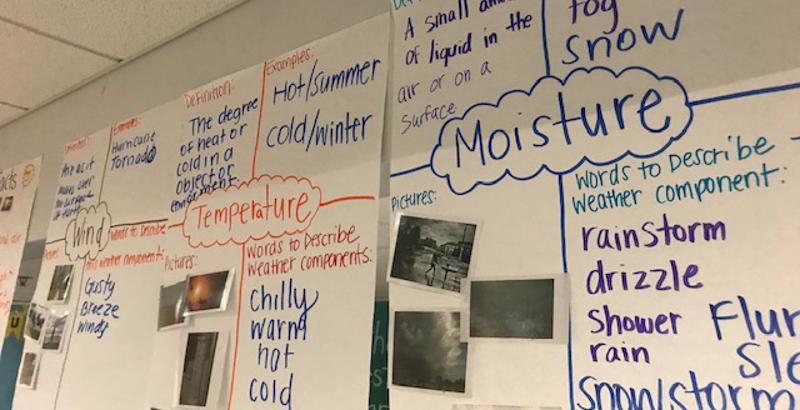
Curriculum Case Study: We’ve Been Teaching Reading Wrong for Decades. How a Massachusetts School’s Switch to Evidence-Based Instruction Changed Everything
Curriculum: The second in our recent series of essays about the Knowledge Matters Campaign’s tour of Massachusetts schools spotlights UP Academy Holland and the efforts of educators Victoria Thompson, Elizabeth Wolfson and Mandy Hollister in leading an instructional shift away from balanced literacy. In its place, the trio helped implement a new high-quality, knowledge-building English language arts curriculum specifically designed to support the science of reading — a curriculum they say changed everything for their students. “For us,” they write, “this journey and shift has been personal — personal for ourselves as educators to do right by our students, personal in that we had been taught a way of teaching that was wrong and yet believed it for so many years, and personal for the students who we saw struggle every single day with the way things were taught.” Read more about their students’ dramatic improvements — and how the school’s story ties into a national trend of educators embracing a new vision of teaching and learning through the implementation of high-quality instructional materials. (Also be sure to check out our complete curriculum series right here)
Go Deeper: Get essential education news and commentary delivered straight to your inbox. Sign up here for The 74’s daily newsletter.
Get stories like these delivered straight to your inbox. Sign up for The 74 Newsletter

;)